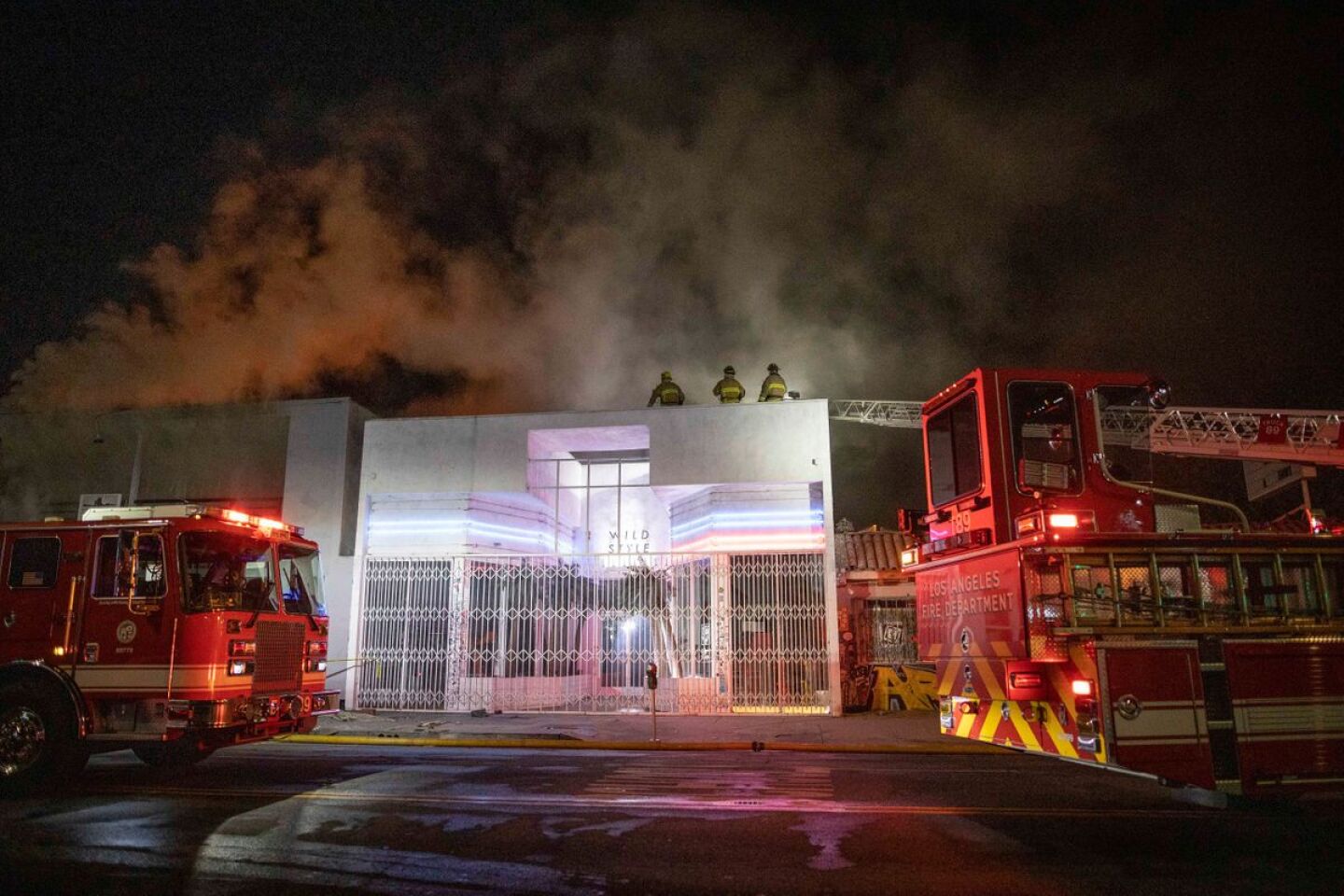Firefighters often find themselves on the front lines of demonstrations or civil unrest, caught in the middle between police and protesters, and in some cases serving as targets themselves.
Committed to advancing fire service safety and resilience, four chief officers are sharing their lessons learned from leading a department through incidents of civil unrest. Share these lessons with your company and training officers to ensure the messages reach the members on the front lines.
Fire Chief Ralph Terrazas, LAFD: “Establish an effective situational awareness information system”
The City of Los Angeles and the Los Angeles City Fire Department (LAFD) have a long history of responding to civil unrest and protests that date back to the Watts riots in 1965, the LA riots in 1992 and, more recently, the civil unrest in May 2020, when George Floyd’s death caught the world’s attention and sparked protests in our city and across our country.
The LAFD’s approach to managing civil disturbances includes the following elements:
- Maintain effective situational awareness to anticipate and plan for any event that may escalate beyond normal operations. This knowledge will enable the department to provide clear instruction to field resources.
- Maintain communication with city public safety leadership to identify needs or gaps.
- Cultivate a close relationship with your law enforcement partners – local, state and federal – as this will help fill the information gap. Know who your counterparts are and how to communicate with them. Have clear communication about the expectations among agencies. Regular access to information from your regional intelligence center (fusion centers) is critical.
- During a period of civil unrest, provide immediate and ongoing guidance to field resources through Metro Fire Communications (Dispatch Center) as directed by the Department Operations Center. Reiterate the mission and goals of the organization – to protect lives and property. Furthermore, it is critical that first responders understand your risk management policy and do not put themselves or others in unnecessary danger.
- Establish a Unified Command element (co-located) with law enforcement and a designated Fire Department Officer as the Law Liaison. This will ensure accurate and timely situational awareness and reconciling of information.
- Develop pre-established resource types (Tactical Task Forces, Medical Groups, etc.) that are small, light and nimble. Develop strategy and tactics to accomplish the mission in the most expeditious, safe and effective manner.
- Capture all of this information on a written Incident Action Plan. Distribute the plan electronically to all personnel, and hold a briefing before the operational period to ensure all questions have been addressed.
- Establish frequent media briefings utilizing social media, TV and radio news outlets. The value of the public information briefing process is significant. People depend on accurate and timely information on which to base their actions as well to address their anxieties.
Our society has become more complex and has given rise to many complicated issues. First responders must gain knowledge and understanding to address these issues. The key is the ability to establish an effective situational awareness information system and then have pre-incident plans at the ready for if and when a civil unrest event occurs.
Our first responders and the people we serve deserve nothing less than our best efforts as we navigate through these controversial and divisive times.

The death George Floyd while in police custody sparked peaceful protests in some areas and civil unrest in others. Firefighters were often on the front lines of these demonstrations, caught in the middle between police and protesters, and in some cases serving as targets themselves.
AP Photo/ Christian Monterrosa
Chief of Department John Sudnik, FDNY: “Embedded communication liaisons have proven to be very valuable”
The following key takeaways are from our Department of Operations:
- Consider use of a mobile command post to ensure the forward levels of command are fluid and may adapt to changing areas of operations.
- Activate additional logistical assets – fleet, communications and other civilian support personnel – early.
- Obtain access to both public (NYC and NYPD) and CATV systems to actively monitor conditions around NYC.
- Coordinate closely with law enforcement. The establishment of our embedded communication liaisons has proven to be very valuable for us to maintain situational awareness of hot spot areas in the city.
- Establish direct communication links. For FDNY, establishing direct communication links through our Fire DARS radio system allows operations, borough commands, division, and battalion chiefs to speak point to point about developing issues. This greatly enhances efficiency as compared to telephone communication.
- Stress the importance of members wearing all PPE if operating at civil unrest scenes and ensure members adhere.
Division Chief Kent Davis, Charlotte, N.C.: “Our personnel operate as one”
One of the biggest lessons we learned is that a strong organizational relationship between fire and law enforcement will help you react to whatever is thrown at you. We all know each other, but how many times do we work through the planning/equipping/training/responding process together? More often than not, we just show up at the same incident. Having a true understanding of each other’s operational equities is very important. Unless each agency knows what the other is going to do, why they are going to do it and how they will do it, then neither agency will be totally successful.
We have come to realize the importance of this during fire-as-a-weapon incidents, active violence events and now civil unrest. This level of integration must range from the street to the command center. Unless you are side by side throughout the operation, you will fail at some point.
For us, we plan together, train together, equip together, command together and operate together. From the time we are mobilized to the time we demobilize, our personnel operate as one.
Our personnel are assigned to the law enforcement platoon, our logistics operations are co-located, and our incident commanders sit side by side. This has allowed us to become one organization during these periods while still meeting each department’s responsibility to the community.
This level of integration allowed us to react to several incidents, including fires, medical emergencies and a confined space rescue 20 feet from a skirmish line. This way works for us. It might not be doable everywhere, but the organizational relationship portion is the key to success.
Like all relationships, this requires constant attention and work. As we move forward, we are trying to ensure that these lessons are not forgotten so that the next generation of leaders can build upon them.
https://www.facebook.com/trey.smith.735/posts/10220638165055807
1st Deputy Fire Chief Byron Kennedy, Atlanta Fire Rescue Department: “The reality of public safety being the target is very real”
Our nation’s recent civil unrest/disturbance activities have reopened traumatic wounds within our country. Regardless of what has driven these events, we all have our agency missions to fulfill, including mitigating situations within the unrest. This often places fire and police, literally, in the middle of the ordeal.
Following are three major takeaways that I see as a must-embrace for fire service leaders:
- Public safety is no longer immune to focused attacks: We must maintain our awareness and safety of our members and equipment because the reality of public safety being the target of various projectiles – and possible snipers acting out on public safety – is very real. Agencies should consider armored rescue vehicles if they choose to engage fire/medical emergencies during these violent affairs. Strong relationships and trust between sister agencies (fire, law enforcement, etc.) are an absolute must in this. Everyone is busy with resources that are likely stretched thin, but strong relationships ensure that each agency has the other’s back regardless staffing levels.
- Provide law enforcement security and escorts: Many of us have used the terminology and practice of a task force/strike team deployment. These teams are awesome and have proven to be very beneficial in the mitigation of various emergencies. For fire personnel, law enforcement officers are a vital component of task forces and strike teams during the unstable events of a civil unrest/disturbance. These teams, when possible, should be established early during the planning phase and be committed to be in place throughout the event. If resources are available, law enforcement escorts (patrol cars) should be used to escort teams near the densely populated areas. The armored vehicles, supplemented by additional civil unrest-trained teams of officers, should join and provide security for fire suppression or medical aid efforts if resources are available.
- Expand tech tools for use during civil unrest: Medium- to long-range drones, with multiple batteries, were phenomenal, as they provided amazing continuous footage pertaining to movement, congregations and even the distribution of projectiles that were later used against public safety. Also, encrypted radio channels are absolutely essential. Lastly, protesters were using laser pointers. Public safety officials should consider quality safety eyewear that protects their eyes from these harmful devices.
There is no one set of lessons learned that will ever make us 100% prepared. However, I believe that as long as we are willing to face and learn more about these ever-changing situations and circumstances, we as an industry and profession will continue to provide the premium-quality work that we are known for globally in safe manner.
[Read Chief Kennedy’s expanded feedback: Civil unrest 2020: 3 key takeaways from Atlanta’s front lines]














